The 10 most diabolical and disgusting parasites
Diabolical parasites
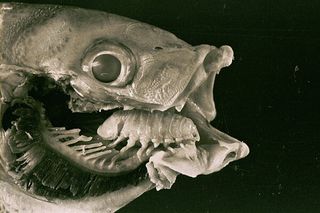
Parasites are sly, using the cleverest of ploys to stay alive while destroying almost everything in their tracks. Parasites have no mercy. Some devour the insides of their hosts. Another replaces the victim’s tongue with its own body. Here are some of the goriest highlights of the moocher world.
Sexually transmitted dog cancer

Dogs have a form of sexually transmitted cancer that for 200 to 2,500 years has apparently spread via contagious tumor cells that escaped from their original body. These cells now travel around the world as parasites, draining nutrients from their hosts. This affliction, known as canine transmissible venereal tumor or CTVT, is spread through sex and licking, biting and sniffing cancerous areas. The tumors usually regress three to nine months after their appearance, leaving the dogs immune to reinfection, although providing enough time for dogs to pass the disease on. They represent the oldest cancers known to science thus far.
Tyrannosaur-starving parasite
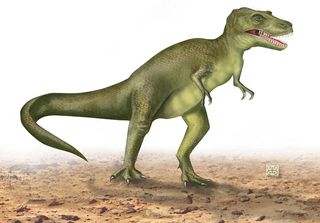
The famous dinosaur known as Sue — the largest, most complete and best-preserved T. rex specimen ever found — might have been killed by Trichomonas gallinae, a protozoan that afflicts birds even today. The remains of Sue, a star attraction of the Field Museum in Chicago, possess holes in her jaw that some believed were battle scars, the result of bloody combat with another dinosaur, possibly another T. rex. Now researchers suggest these scars did not result from a clash of titans, but rather from the protozoan infecting Sue's throat and mouth. Some birds, such as pigeons, commonly host the parasite yet suffer few ill effects. But in birds of prey, such as falcons and hawks, the germ causes a pattern of serious lesions in the lower beak that closely matches the holes in the jaws of Sue and occurs in the same anatomical location. The infestation might have been so severe that the 42-foot-long, 7-ton dinosaur starved to death.
Web-manipulating wasps

Although parasites harm their hosts, they don't usually kill them, if only to keep themselves alive. Not so with parasitoids, which ultimately destroy and often consume their hosts. Parasitoid wasps, which inspired the monster in the movie “Alien,” lay their eggs inside their victims, with the offspring eventually devouring their way out. A number of the species control their host's minds in extraordinary ways — the larvae of the wasp Hymenoepimecis argyraphaga, which infests the spider Plesiometa argyra, makes their victims spin unusual webs especially well-suited for supporting their cocoons.
Male-killing bacteria
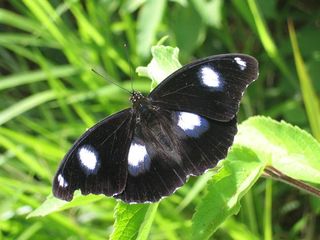
The genus of bacteria known as Wolbachia infests a whopping 70 percent of the world's invertebrates, and has evolved devious strategies to keep spreading. In female hosts, the germ can hitch a ride to the next generation aboard the mother's eggs, and since males are essentially useless for the bacteria's survival, the parasite often eliminates them to increase the rate of females born, by either killing male embryos outright or turning them into females. Incredibly, the bacteria have even found a way to sneak their entire genomes into the cells of fruit fly hosts.
Ant-deceiving butterfly
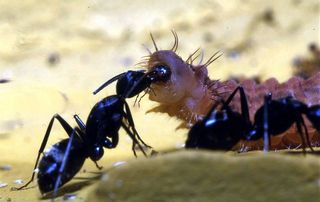
Just like cuckoo birds, the Japanese lycaenid butterfly Niphanda fusca lays its eggs in the nests of other species, in this case the carpenter ant Camponotus japonicus. The caterpillars that hatch from these eggs then dupe the ants into adopting them by mimicking the odor of the high-ranking male ant caste. Such a chemical disguise explains why these "social parasite" moochers are enthusiastically fed by their hapless hosts in preference to the ants' own brood.
Eye-infesting Worm
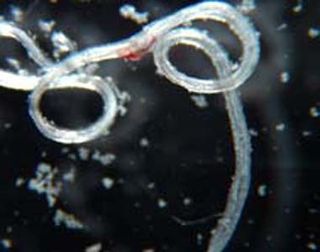
The worm Loa loa, which dwells in rainforests and swamps of West Africa, infects people through the bite of a deerfly or a mango fly. The worms wander under the skin of their victims at all times of day, feeding on fluids in human tissues. The worms live in the bloodstream when the sun is out and people are most likely to get bitten by flies that can, in turn, spread the worms to other unwitting martyrs; they retreat into the lungs at night. They occasionally cross into the eyes, where they can be quite painful.
Feminizing barnacles
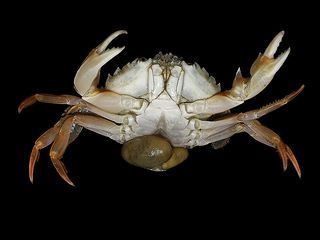
The females of the parasitic barnacles known as Sacculina carcini invade crabs, sprouting root-like tendrils that reach throughout their victim's body, even coiling around its eyestalks. Living off nutrients dissolved in the crab’s blood, this parasite grows into a bulge on the host’s underside where it can house any offspring. Infected female crabs nurture this knob as they would the fertilized eggs they normally keep at that spot; parasitized male crabs grow abdomens as wide as the girth of a female, wide enough to accommodate the barnacle's knob, and grooms the parasite just as infected female crabs would their own family.
Head-bursting fungus
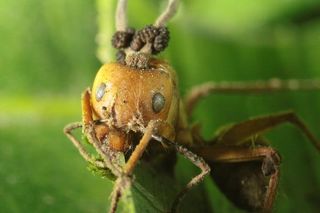
In a bizarre death sentence, the fungus Ophiocordyceps unilateralis turns carpenter ants into the walking dead. The fungus prefers the undersides of leaves of plants growing on the forest floor. That's where temperature, humidity and sunlight are ideal for the fungus to grow and reproduce and infect more victims. The parasite gets the insects to die hanging upside down, and then erupts a long stalk from their heads with which it sprinkle its spores to other ants. Fossil evidence recently suggested this fungus has zombified ants for millions of years.
Tongue-eating crustacean

The crustacean Cymothoa exigua has the dubious and unsettling honor of being the only parasite known to replace an organ. It enters through the gills of the spotted rose snapper, attaching to the base of the fish’s tongue, where it drinks its blood. The bloodsucking causes the tongue to eventually wither away, at which point the crustacean attaches itself to the tongue stub, acting as the fish's tongue from then on.
Sign up for the Live Science daily newsletter now
Get the world’s most fascinating discoveries delivered straight to your inbox.

